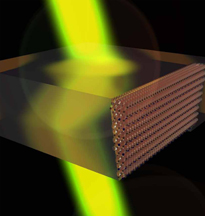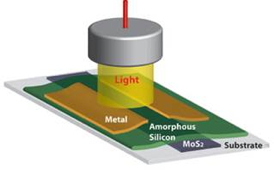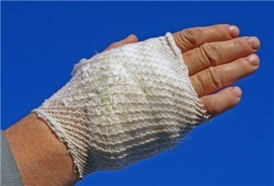Science
DNA nanorobots find and tag cellular targets

This graphic shows a molecular robot (automaton) in action. To tag cells (grey circle) that display the Mi, Mj, and Mk receptors, five different components of a molecular robot are deployed. Each of the first three components consists of DNA and an antibody; one antibody binds to each receptor, bringing its DNA (represented by the colored lines) close together on the cell. The fourth DNA component, represented by the single red line, then initiates a chain reaction by pulling the red DNA strand away from the first antibody. That causes the blue DNA strand to change position, followed by the green DNA strand. In the final step, the last antibody pulls a fluorescent DNA strand (labeled F) from the fifth component, completing the action of the robot.
- Read more
- 385 reads
The Sun's Magnetic Field is about to Flip

A new ScienceCast video anticipates the reversal of the sun's global magnetic field.
http://science.nasa.gov/science-news/science-at-nasa/2013/05aug_fieldflip/
- Read more
- 319 reads
Making a Mini Mona Lisa: Nanotechnique creates image 30 microns in width

Gray Scale Mona Lisa
- Read more
- 345 reads
Alternative materials could bring 'plasmonic' technologies

This graphic depicts a device created using "negatively refracting metamaterials" that could bring advances in applications including sensing, imaging, data storage, solar energy and optics. Purdue researchers are working on a range of options to overcome a fundamental obstacle in commercializing the materials. The small spheres at right represent a lattice of "meta-atoms" carefully designed and fabricated to produce a high-performance device.
- Read more
- 323 reads
Cobalt Replacements Make Solar Cells More Sustainable

The dye-sensitized solar cell (DSC) converts light to electricity. A coloured copper complex absorbs light and injects an electron into a semiconductor. This electron then passes around a circuit, does work, and is eventually returned to the copper to regenerate the dye by a transport system. In this new work, the cobalt complex acts as an electron transport agent between the cathode and the dye molecules allowing the photocurrent to flow.
- Read more
- 312 reads
When galaxies switch off

- Read more
- 282 reads
Galaxies Fed by Funnels of Fuel

Created with the help of supercomputers, this still from a simulation shows the formation of a massive galaxy during the first 2 billion years of the universe. Hydrogen gas is gray, young stars appear blue, and older stars are red. The simulation reveals that gas flows into galaxies along filaments akin to cosmic bendy, or swirly, straws.
- Read more
- 319 reads
Auto lubricant could rev up speed of medical imaging

Shown is an experimental photodetector made out of amorphous silicon and molybdenum disulfide (MoS2). The two semiconductors together form a high speed photodetector.
- Read more
- 398 reads
Faster Treatment of Third-Degree Burns by Nanofibrous Coatings

- Read more
- 413 reads
Human Rights
Fostering a More Humane World: The 28th Eurasian Economic Summi

Conscience, Hope, and Action: Keys to Global Peace and Sustainability

Ringing FOWPAL’s Peace Bell for the World:Nobel Peace Prize Laureates’ Visions and Actions

Protecting the World’s Cultural Diversity for a Sustainable Future

Puppet Show I International Friendship Day 2020


